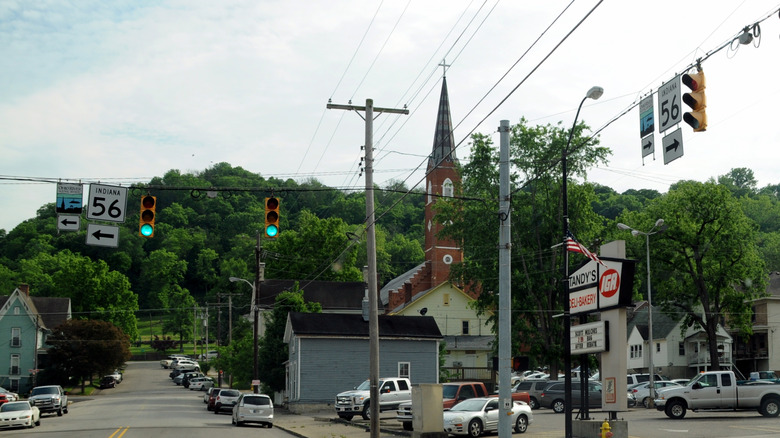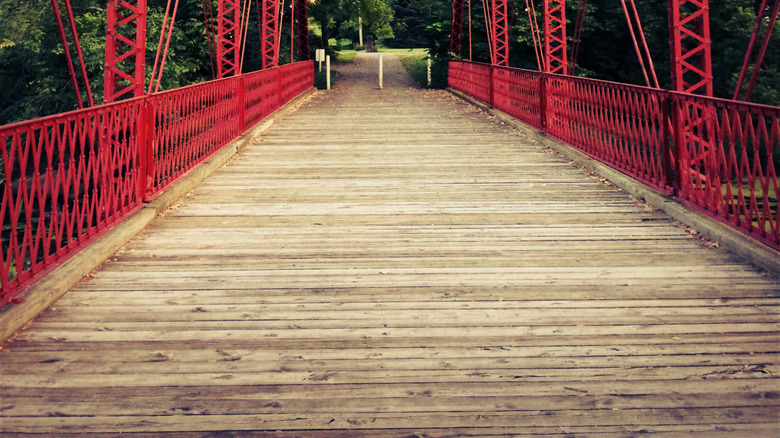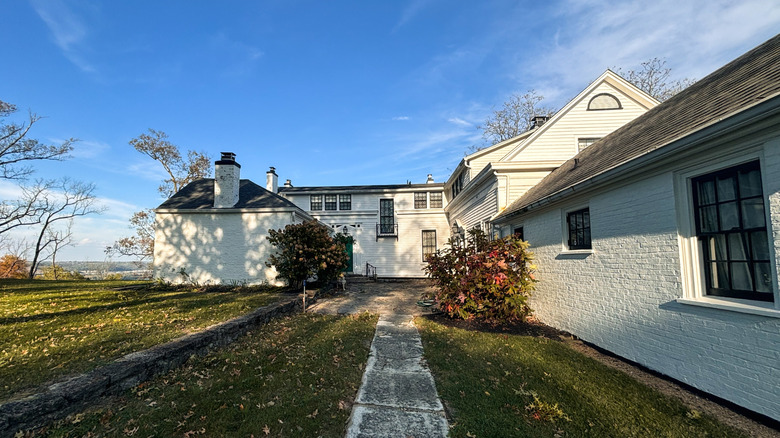Indiana's 'City Of Spires' Is A Jewel Of Victorian Mansions, Museums, A Historic Downtown, And River Trails
Several Indiana towns have creative nicknames, showcasing their location, history, or industry. Van Buren, Indiana, for example, is the "popcorn capital of the world." So it makes sense that when riverboat captains saw the spires of dozens of churches reaching into the sky in Aurora, Indiana, a nickname would soon follow. The "City of Spires," as it came to be known, was founded in 1819.
Today, this town, sitting 20 miles west of the Cincinnati/Northern Kentucky International Airport, still has plenty of churches of all faiths lining its streets. But Aurora has also preserved a historic district that offers shops, restaurants, and museums that are dedicated to honoring this river town's history. The town's expansive historic district showcases buildings from the 19th and 20th centuries along 25 blocks that feel straight out of a fairytale.
Each historic building in this nationally registered historic district is unique in its design and purpose. Wooden, two-story homes appear to capture a moment in time, while nearby brick mansions are preserved and serve as homes to locals today. It's all supported by Main Street Aurora, a non-profit organization that works with the city to keep downtown revitalized and active, while preserving its history. Its location and water access make it one of several of the Midwest's best small towns with riverfront charm.
Access downtown and more preserved history on the Dearborn Trail
Aurora is one of many small cities and villages resting along the Ohio River in Indiana. The Dearborn Trail, stretching just over 4 miles, makes accessing them all simple with easy-to-navigate bridges from the 19th century. If you prefer to cycle rather than walk, you can, thanks to a public bikeshare offering a relaxing, car-free rural getaway for locals and visitors alike.
Starting at the George Street Bridge in Aurora allows pedestrians and cyclists alike to pass through the historic downtown. The short ride ends in Lawrenceburg, Indiana, at the impressive and preserved railroad bridge that crosses Tanners Creek. From here, the trail travels up a ridge, offering high-level views of Lawrenceburg's downtown district.
In a show of cooperation, both Lawrenceburg and Aurora share responsibility for the trail's maintenance and are regularly adding amenities. If, however, cycling or walking are not on your list of things to do here, there are plenty of other options. Museums provide ample opportunity to immerse yourself in the Victorian history of this region, and Aurora, especially.
Mansions preserved in the 19th century
Sitting just blocks away from Aurora's historic district is the Hillforest Victorian House Museum. As its name implies, this mansion offers visitors a look back at what life was like in Indiana in the middle of the 19th century. Outside, curved doors and windows showcase the opulence of the time, while inside, rooms sit adorned with Victorian-era furniture and accent pieces to provide a fully immersive experience.
Less than 2 miles to the south and resting on a bluff overlooking the Ohio River is the historic Veraestau. This 116-acre estate was originally constructed in 1810, and its name is a combination of the Latin words for spring, summer, and fall. Both the Veraestau and the Hillforest are open for tours and rental opportunities, the former by appointment only and the latter seasonally from April 1 to December 31.
Any time is a good time to visit historic Aurora. Main Street Aurora organizes walking tours, music festivals, and more throughout the year. Outdoor activities like biking the Dearborn Trail are better in the warmer months, of course. And each holiday season, downtown Aurora offers Christmas-themed events on its main street.


